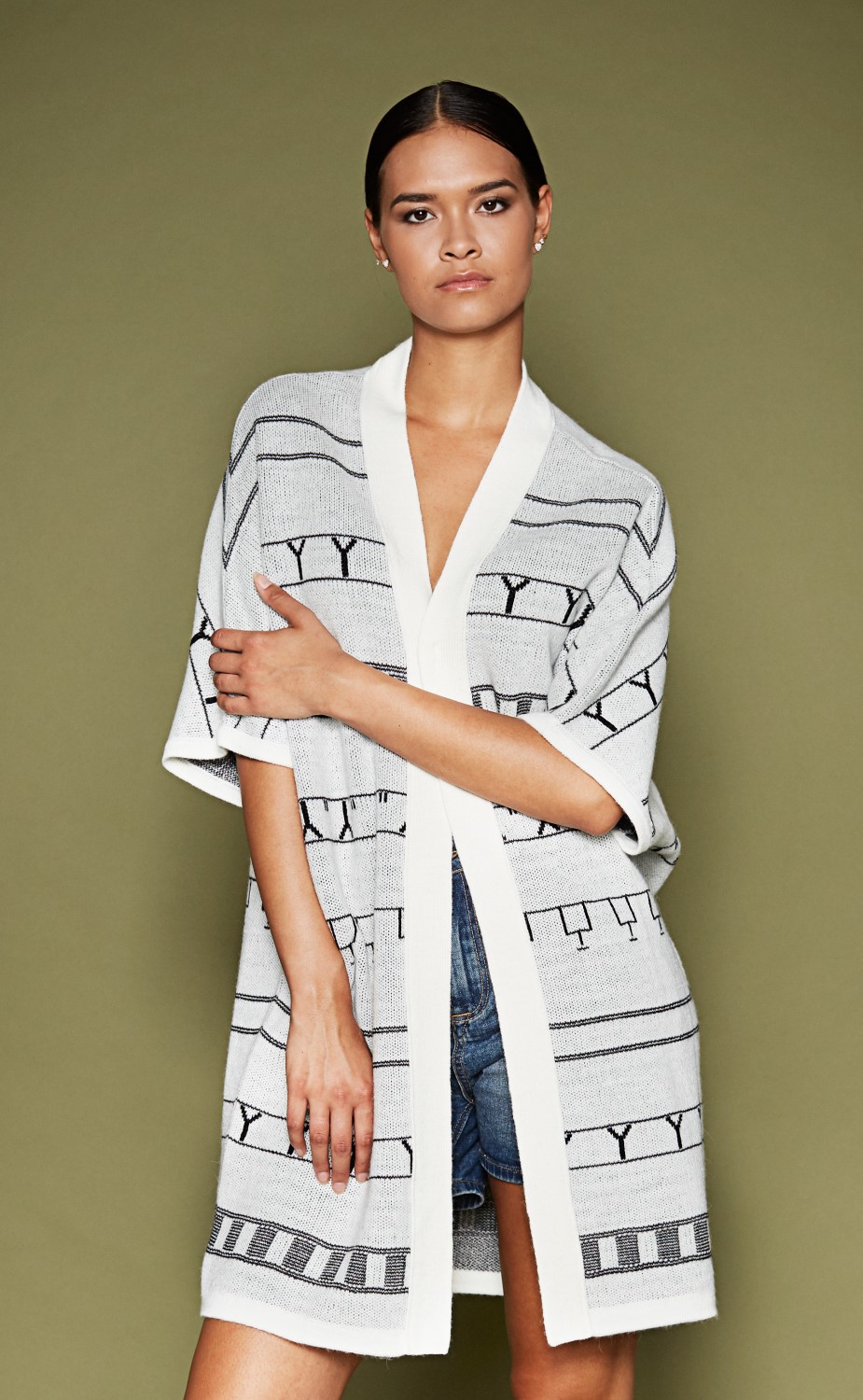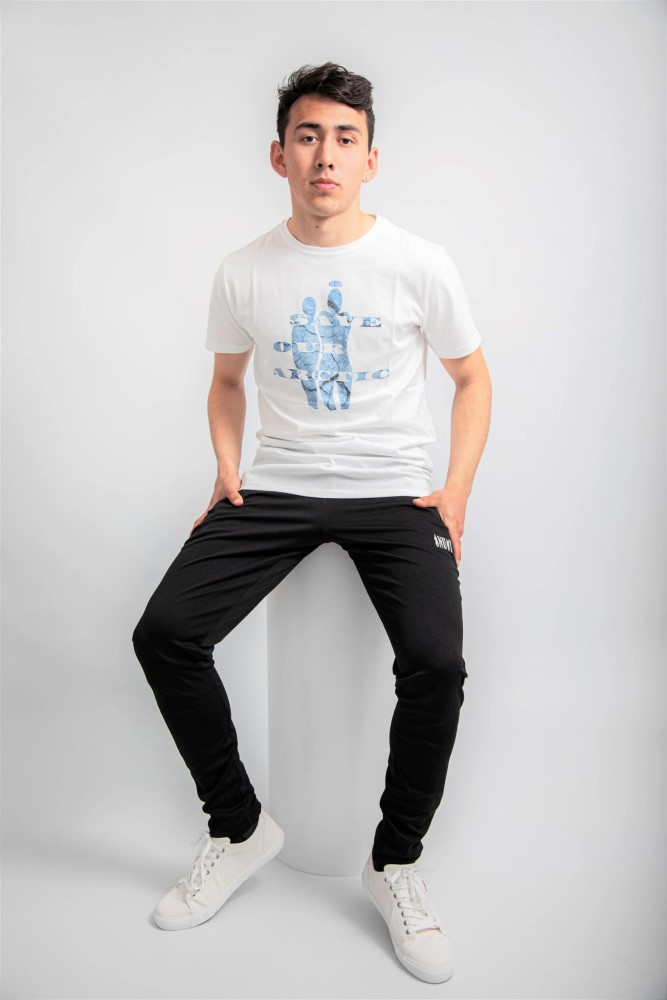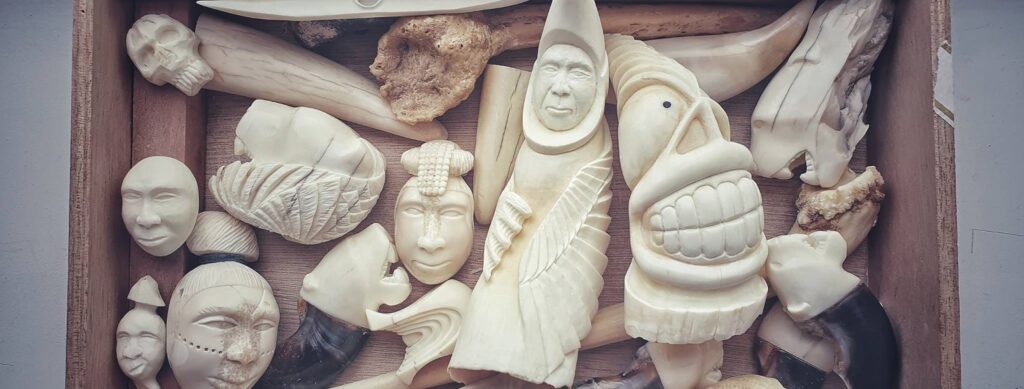
THE FIFTH DAUGHTERS, 2014 / COOPER & GORFER, ENA WITH EYES SHUT, 2014 / COOPER & GORFER
For many years, the fashion and design industry has been characterised by clothing and jewellery that refer to Greenlandic culture. However, young designers are increasingly turning away from the use of cultural symbols and instead referring to more global trends.
In the years leading up to 1979, when home rule was introduced, young Greenlanders wore anoraks and Greenlandic jewellery to show their national pride. Today, Greenlandic cultural symbols still characterises much of the fashion clothing that is now being mass-produced in foreign factories.
Fashion and design are being used to market the country. The designers use their Greenlandic identity and culture to express themselves, and their products do not only target the Greenlandic market.
From fashion to tradition
Greenlandic skin clothes have changed considerably over the past 500 years, partly due to contact with Europeans and partly because of Greenlanders’ own approach to fashion. Ancient tales, myths and diaries of Europeans tell of how the women sewed clothes for their impending meeting with other compatriots at summer camps, and how they also swapped creations.
The whalers and the Norwegian-Danish mission brought European fashion accessories such as beads, lace, embroidery and fabric. The women used it for their costumes – and no two were the same. The more resources one had, the more decorated the costume.
There are three regional costumes: arnatuut in Thule, tunumiutuut in East Greenland and kalaallisuut in West Greenland. The latter, due to contact with the Norwegian-Danish mission since 1721, has changed the most, and the presence of European whalers from the Netherlands and Great Britain in particular since the 15th century characterised the West Greenland costumes.
Several designers has drawn inspiration from the West Greenlandic women’s costume. Since the 1930s, it was possible to buy fabric for dresses or buy ready-made dresses, but it was not until during World War II that a majority of women began to wear American and European clothing. The women’s costume became a national costume worn at holidays and special events, and its shape has not been changed since the 1940s.
Clothing design

MICHAEL TONSBERG/ISAKSEN BY NICKIE ISAKSEN, 2020
Some 50 years after Greenlanders began to wear western clothes, the first major collections by Greenlandic designers were put into production. Many of their designs rely on Greenlandic natural and cultural history, but there are also lines that completely or partially distance themselves from that style.
Isaksen Design
The first Greenlandic fashion designers to launch collections were Rita and Nickie Isaksen, who founded Copenhagen-based Isaksen Design in 2002. Mother and daughter, both residing in Denmark, often draw inspiration from Greenlandic nature, culture and history, including cultural symbols such as the women’s knife ulu, tupilaqs and Inuit tattoos. The collections have been well received in both Greenland and Denmark. Isaksen Design makes fashion clothes and jewellery both for men and women and children’s clothing.

INUIT QUALITY CLOTHES OF GREENLAND, 2020
Bibi Chemnitz
Designer Bibi Chemnitz founded her brand in 2005 in Denmark, and today she is based in both Nuuk and Copenhagen. Her design draws on the two widely different universes: Greenland’s harsh nature and the cobbled alleys of Copenhagen. The collections, which are aimed at both men and women, are called streetstyle and are sold to both young Greenlanders and internationally. One of Bibi Chemnitz’s hallmarks is the Greenland flag, Erfalasorput, in black and white and the silhouette of Greenland. It is also used as a logo in her outdoor collection.
Anita Høegh
In 2008, Anita Høegh set up a yarn production and opened a shop in Sisimiut, Qiviut, selling yarn from muskox and sheep wool. In 2013, she opened another shop in Nuuk, and the two shops sell only what the employees design and produce. With Anita Høegh in charge, the shops have their own wool workshop and purchase muskox skins directly from the hunters. The production company focuses on nature’s own raw materials and sells shawls, beanies, sweaters, wristlets and other garments made of muskox and sheep wool. In addition, Qiviut also sells quality outerwear sewn from sealskin, which is intended for people who spend a lot of time on outdoor activities in winter, such as dog sled drivers and hunters.
Louise Lynge Berthelsen
In 2010, Greenlandic seamstress and designer Louise Lynge Berthelsen opened Nuuk Couture. Initially, she sewed to orders, but after a few years, she began designing and mass-producing fashion clothes for women, and later, she started to focus on men and children. She is the first Greenlandic designer to have a collaboration with Kalaallit Nunaanni Brugseni (Greenlandic supermarket chain) and sold children’s clothes with inspirations from the West Greenland costume.
Louise Lynge Berthelsen, who comes from a large family in Nuuk, has a grandmother who is a national costume seamstress. Her designs are based on the narrative of the West Greenland women’s costume and pay respects to both the seamstresses and the costume. With the slogan ‘Sapinngilagut’ (we can do it), she has also created a street wear collection aimed at young people. She is also behind a jewellery collection that refers to the West Greenland beaded collar.
Inuit Quality Clothes of Greenland
Inuit Quality Clothes of Greenland was founded by Dorthea Rødgaard from Qaqortoq and Hanne Kristiansen from Aasiaat. Both women own clothes shops, and in 2012, they found that there was a lack of clothing designed by Greenlanders, and they therefore decided to make a brand with which the Greenlandic fashion wearers could identify with.
With a silhouette of a Greenlandic woman with a hairtop and a Greenlandic man included in the word Inuit, graphic design fashion clothes and outerwear from Inuit Quality Clothes of Greenland have now been produced for the last nearly ten years. The clothes are promoted by singers Julie Berthelsen and Simon Lynge on social media.
Bolt Lamar
Bolt Lamar is a graphic design brand created by two anonymous young men. The name of the brand is a merger between two international stars, Olympic gold sprint winner Usain Bolt of Jamaica and American rapper Kendrick Lamar. The brand started as leisure project for two friends, and because it became so popular, they chose to mass-produce their designs on T-shirts, hoodies, beanies and caps.
Bolt Lamar can be seen as a backlash to the use of the Greenlandic cultural symbols in clothing collections. When the surnames of the two world stars are merged, the brand symbolises globalism and that as a Greenlandic designer you can pick from all over the world.
Jewellery design

KIM KLEIST ERIKSEN, 2018
Jewellery designers and entrepreneurs who mass-produce jewellery also use traditional cultural symbols. Isaksen Design, Nuuk Couture and Inuit Quality Clothes of Greenland also produce jewellery as part of their designs. As one of the first Greenlandic entrepreneurs, Duuden Design from Qaqortoq started to produce acrylic glass jewellery. In addition to the mass-produced jewellery, there is also jewellery made from the bones, roof, claws and tusks of animals. The jewellery points back to the Greenland aarnuaq, an amulet whose power was supposed to protect the wearer.
Many jewellery designers are inspired by the Greenlandic culture and nature. The autodidact Kim Kleist Eriksen of Sisimiut cuts various motifs out of narwhal and walrus tusk. Also Gedion Qeqe from Tasiilaq, who in 2018 was appointed as cultural ambassador for Kommuneqarfik Sermersooq, makes popular jewellery from caribou antlers, tusk and stone. Both artists interpret different symbols from Greenlandic tales and myths in their jewellery.
Aviaaja Kleist Burkal also draws on Greenlandic symbolisms. She graduated in 2015 as a jewellery designer from the Institute of Precious Metals in Copenhagen and also has a degree in art and design from Italy and Austria. Her jewellery has references to the South Greenland storis (great ice) and the raven.
Further reading
- Hans Egede and the work for the mission service
- Industry and labour market
- Inuit way of life
- Towns and settlements
- Traditions and tales
- Visual arts and crafts
Read more about Culture in Greenland

